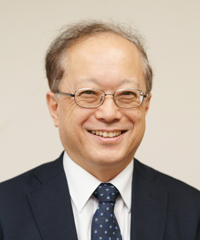Everyone knows that children are frightened by the white coat of a doctor. When I was a clinical resident at The University of Tokyo Hospital, the professor of pediatric medicine was Dr. Noboru Kobayashi who is widely known as a groundbreaking scholar with many years of clinical experience in the United States and the U.K. As you know, Dr. Kobayashi is also the founder of CRN. His teacher was Professor Hugh Jolly, head of a children's hospital on Great Ormond Street, who was known for not wearing a white coat. Perhaps this was because he didn't want to make the children uncomfortable.
Dr. Kobayashi did not require doctors, including interns and medical residents, to wear a white coat, but left the decision up to each doctor, and this appeared to be following the practice of Professor Jolly.
An unworthy student of Dr. Kobayashi, I have continued this practice of not wearing a white coat as a pediatrician. The exception, of course, is when I visit a neonatal care unit, which requires sanitary conditions.
But, are children really frightened by the doctor's white coat? It appears that there is actually research on this subject.
In 1999, the journal Clinical Pediatrics published the results of a survey in which parents and their children between the ages of five and fifteen were shown photos of doctors wearing or not wearing a white coat and then asked which they preferred.* The survey was carried out by doctors under the presumption that the answers would indicate a preference for doctors who were not wearing white coats. The results, however, revealed that 54% of the children preferred doctors in white coats. Of the parents, 35% preferred the white coats and two-thirds did not. Children were also shown a photograph of a doctor standing and another stooping down to the child's level and asked which they liked more. Contrary to expectations, 68% of the children stated that they liked the photo of a doctor standing, but about 60% of the parents chose the kneeling doctor. Generally speaking, it is considered that standing and looking down at a child is an overbearing stance, so communicating at eye level is better, but this survey may, in fact, correctly convey children's true feelings. When you think about it, although we want the faces of people we like to be closely positioned to us, we do not want to closely view the faces of those we don't know or who might cause us pain.
It is not possible to base all judgments on the survey alone, but it may be necessary to take the humble view that children may actually have different feelings from what we adults are so quick to assume.
Jean Piaget, a prominent figure in the field of early childhood developmental psychology perceived this. His lectures and writing include the following observations.
Our interest in children (infants) concerns what they are thinking, and as such, we use knowledge regarding consciousness that is based on our adult experience and then draw an analogy between what we see in the conduct or actions of infants and ourselves.(...) Therefore, when we study children, we are first confronted with the rules of methodology, and must be wary of comparisons with adult behavior, or what you might call an "adult-centered" approach. (Piaget, 1927) **
I am impressed by Piaget's outstanding insight, but do we not continue to repeat the mistakes that he warned against nearly one hundred years ago?
Reference:
* McCarthy JJ et al. Children's and parents' visual perception of physicians. Clinical Pediatrics, 38:145-152, 1999.
** Piaget J. La Première année de la vie de l'enfant. British Journal of Psychology, 18, 97-120, 1927-1928.



 Yoichi Sakakihara
Yoichi Sakakihara










